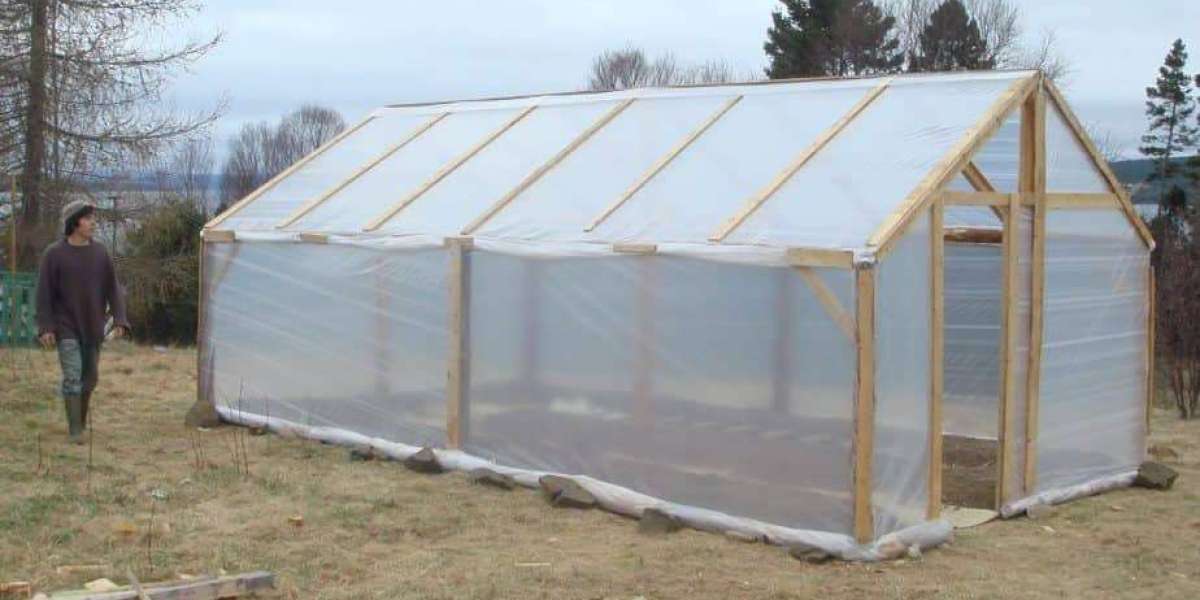In the realm of agriculture, where innovation meets tradition, greenhouse plastic film emerges as a fundamental tool for modern farming practices. This unassuming yet indispensable material facilitates controlled environments, optimizing plant growth and productivity. In this comprehensive guide, we will explore the ins and outs of greenhouse plastic film, from its composition and types to its applications and benefits. Finding the right Greenhouse plastic film supplier is essential to ensure quality, durability, and reliability for your agricultural operations.
Understanding Greenhouse Plastic Film:
Greenhouse plastic film, also known as polyethylene film or poly film, is a thin, flexible material made from polyethylene resin. Its primary function is to cover greenhouse structures, offering protection from external elements while allowing sunlight to penetrate and maintain optimal growing conditions inside. This translucent or transparent film comes in various thicknesses, catering to different climates and needs.
Types of Greenhouse Plastic Film:
Standard Clear Film: This is the most common type, offering high light transmission and visibility. It is suitable for general greenhouse applications.
UV-Stabilized Film: Treated to withstand prolonged sunlight exposure without degradation, UV-stabilized film prevents yellowing and brittleness, extending its lifespan.
Diffused Film: Scattering sunlight to reduce hot spots and shadows, diffused film promotes uniform light distribution for even plant growth.
IR-Blocking Film: Filtering out infrared radiation, IR-blocking film helps regulate greenhouse temperatures, preventing overheating and retaining warmth during colder periods.
Applications of Greenhouse Plastic Film:
Greenhouse plastic film finds diverse applications across agriculture and horticulture industries:
Crop Production: It covers greenhouse structures for growing vegetables, fruits, flowers, and ornamental plants.
Nursery Propagation: Greenhouse film facilitates seed germination, seedling growth, and plant propagation.
Research and Experimentation: Scientists utilize greenhouse film for experiments, studying plant biology, and developing cultivation techniques.
Season Extension: In regions with short growing seasons, greenhouse film extends the growing season by protecting plants from frost, wind, and rain.
Benefits of Greenhouse Plastic Film:
Enhanced Plant Growth: Creating a controlled environment, greenhouse film optimizes temperature, humidity, and light levels, promoting healthy plant growth.
Protection from Elements: Shielding plants from adverse weather conditions, greenhouse film reduces crop damage and losses.
Increased Yield and Quality: By providing optimal growing conditions, greenhouse film maximizes crop yield and improves produce quality.
Cost-Effectiveness: Compared to glass, greenhouse film is more affordable to purchase, install, and maintain, making it accessible to farmers.
Versatility: Customizable to suit specific crop requirements and environmental conditions, greenhouse film offers flexibility in design and application.
Best Practices for Using Greenhouse Plastic Film:
Proper Installation: Securely fasten the film to the greenhouse frame to prevent flapping or tearing during windy conditions.
Regular Maintenance: Inspect the film for damage or wear, repairing or replacing it as needed to maintain effectiveness.
UV Protection: Use UV-stabilized film to prolong lifespan and prevent degradation from sunlight exposure.
Climate Control: Monitor and regulate temperature, humidity, and ventilation inside the greenhouse for optimal plant growth.
Recycling and Disposal: Responsibly dispose of old film by recycling or following local regulations.
Conclusion
Greenhouse plastic film remains a cornerstone of modern agriculture, offering versatility, affordability, and effectiveness. By understanding its types, applications, and benefits, farmers can harness its potential to create thriving ecosystems and cultivate bountiful harvests. With proper installation, maintenance, and sustainable practices, Plastic film greenhouse continues to revolutionize the way we grow food and nurture the earth's bounty.
Frequently Asked Questions (FAQs):
1. What makes Singhal Industries' greenhouse plastic film stand out from competitors?
Singhal Industries takes pride in offering greenhouse plastic film of the highest quality, manufactured using premium-grade polyethylene resin. Our film is UV-stabilized to withstand prolonged sunlight exposure, ensuring durability and longevity. Additionally, our commitment to innovation and continuous improvement means that our greenhouse film is designed to meet the diverse needs of farmers and horticulturists, providing optimal light transmission, climate control, and crop protection.
2. Can Singhal Industries' greenhouse plastic film be customized to suit specific requirements?
Yes, at Singhal Industries, we understand that different crops and growing environments may necessitate tailored solutions. That's why we offer customization options for our greenhouse plastic film. Whether you need diffused film for uniform light distribution, IR-blocking film for temperature regulation, or specialized thicknesses for enhanced durability, we can work with you to create the perfect solution for your greenhouse needs.
3. How does Singhal Industries ensure eco-friendliness in its greenhouse plastic film production?
At Singhal Industries, sustainability is at the core of our business practices. We prioritize eco-friendly materials and manufacturing processes to minimize our environmental footprint. Our greenhouse plastic film is designed for recyclability, allowing for responsible disposal at the end of its lifespan. Additionally, we continuously explore innovative solutions and technologies to reduce energy consumption and waste generation throughout the production cycle, ensuring that our products support environmental stewardship.









